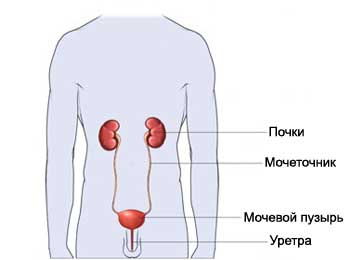Intravenous pyelography – Descending urography – Intravenous urography
Description IVP
Intravenous pyelogram (GDP) – test, which measures the existence of problems in the urinary tract. It is carried out by means of a contrast dye and x-ray rays.

Reasons for IVP
Intravenous urography done, to determine:
- The reason for the presence of blood in urine;
- Tumors;
- Availability of kidney stones or bladder;
- Damage to the urinary tract from injury or infection;
- Other problems functioning kidney or bladder.
Possible complications of IVP
Complications are rare, but no procedure does not guarantee the absence of risk. If you plan to intravenous urography, you need to know about possible complications, which may include:
- Allergic reactions to the contrast agent;
- Renal failure.
Some factors, that may increase the risk of complications:
- Allergy to contrast dye (eg, iodine);
- Blood diseases;
- Poor kidney function;
- Taking certain medications.
Pregnant women should not take this test.
How is the IVP?
Preparation for the procedure
In anticipation pyelography:
- We must pass the tests of kidney function;
- The day before the test, you may be asked to use laxatives and, perhaps, enema, to cleanse the bowel, as chair in the intestines may make it difficult to read X-rays.
- Do not eat or drink anything after midnight.
Description IVP
In the vein needle is inserted for introducing liquids, through which the contrast agent is supplied and the required medication. For the next 30-60 minutes, you will lie on a special table, and using the X-ray apparatus will take pictures. You may be asked to hold your breath, when the picture is taken. Contrast dye will highlight the urinary system on the x-ray. This will allow the doctor to see these body parts in the picture, and identify the problem. After the X-rays you have to empty the bladder.
After intravenous pyelography
You will be able to return to daily activities. Be sure to follow your doctor's instructions.
How long will the IVP?
About 60-90 minutes.
Ivp – Will it hurt?
No, but you can feel a sense of warmth or heat, when the contrast medium passes through the body.
Results IVP
Obtaining test results may take several days. According to the results the physician can prescribe treatment.
Contact your doctor after intravenous pyelography
After returning home, you need to see a doctor, If the following symptoms:
- Nausea and / or vomiting;
- Itching and skin rash;
- Breathlessness.
